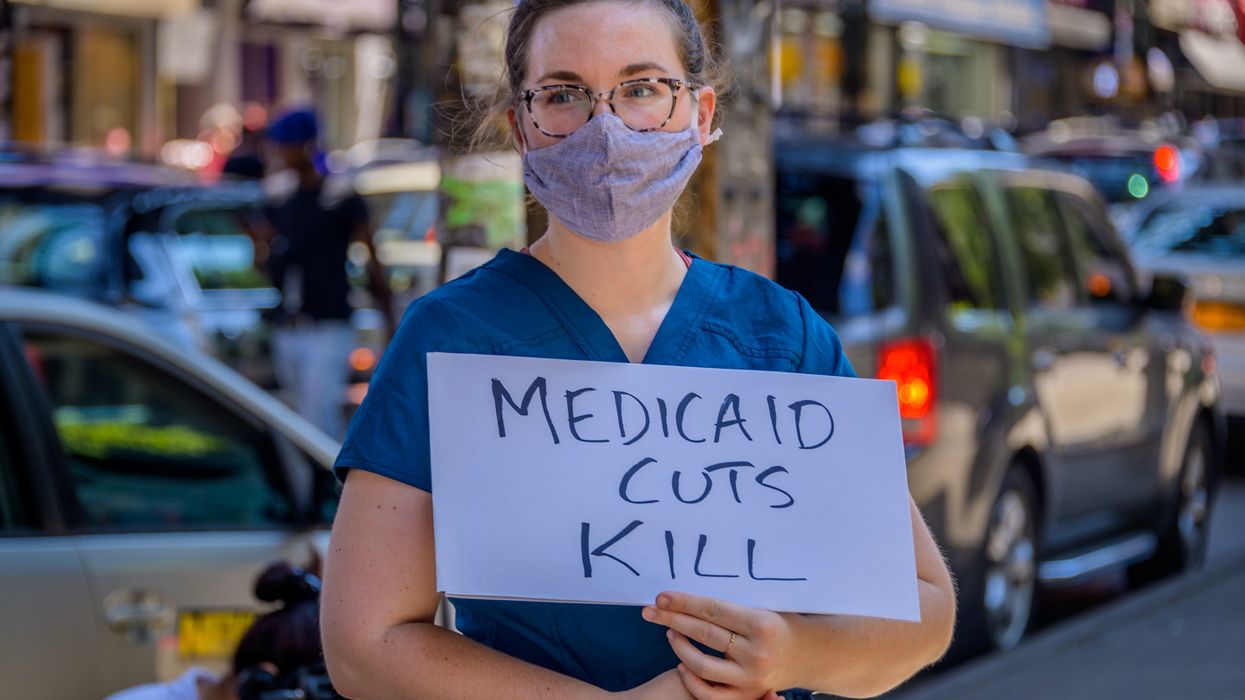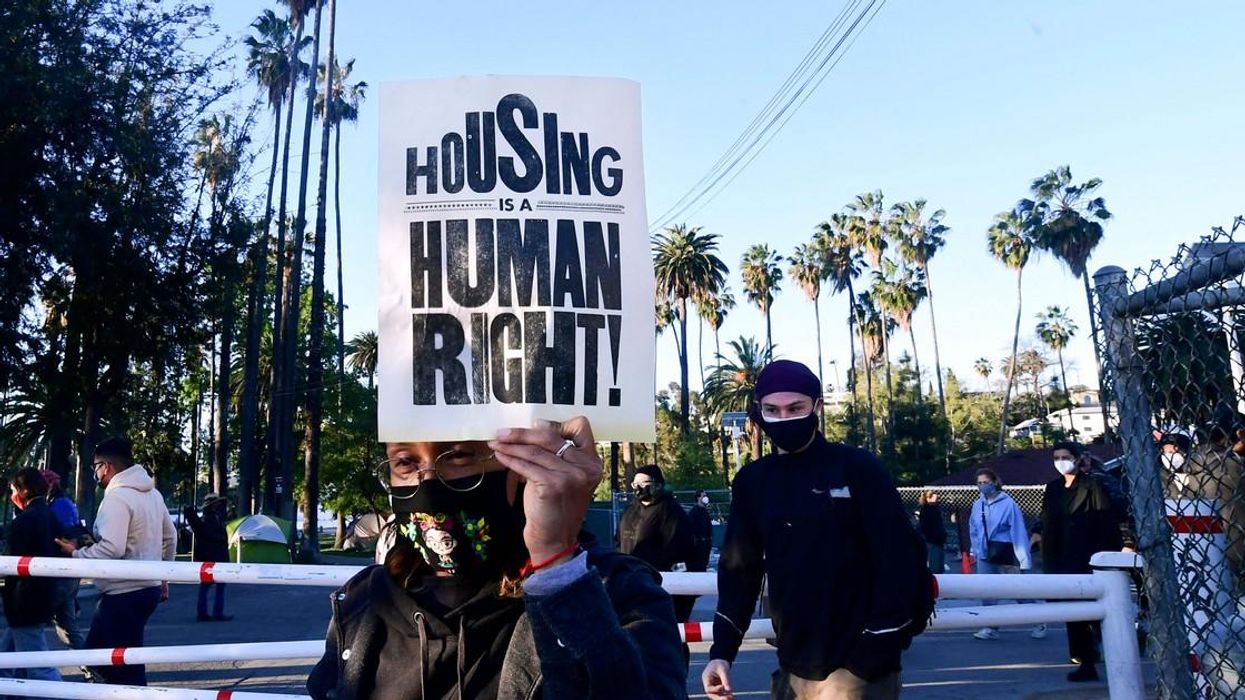Cutting Medicaid, SNAP, and Housing Assistance Will Harm Low-Income Americans
Members of House committees must carefully consider the benefits that these programs deliver to U.S. families before making decisions about where and how to make the spending cuts required by the latest budget.
In late February, the U.S. House of Representatives passed a budget resolution that calls for $4.5 trillion in tax cuts and $2 trillion in federal spending cuts. This resolution provides a framework for a more detailed budget bill to come, mandating certain House committees to reduce spending over the next decade on government programs under their purview—for instance, calling on the Committee on Energy and Commerce to find $880 billion in cuts, $230 billion for the Agriculture Committee, and $1 billion for the Committee on Financial Services, among others. These committees will have to make difficult decisions about where to reduce federal spending and by how much as they draft their actual budgets in the coming weeks.
The implications of their decisions will be far reaching. Medicaid, the Supplemental Nutrition Assistance Program, and housing assistance programs are all at risk because they fall under the jurisdiction of the committees subject to large spending cuts and comprise a major share of those committees’ spending. Cutting back on these social infrastructure programs would come at a huge cost for the well-being of U.S. families, given the well-documented benefits these programs bring to the health, education, and financial stability of participating households.
The Impact of Cutting Medicaid
The U.S. private health insurance system does not cover large groups of people—for instance, low-income elderly people who need assistance for expensive long-term care, people with disabilities, and low-income children and adults—all of whom turn to Medicaid for healthcare coverage. The Medicaid program is the second-largest program under the jurisdiction of the House Committee on Energy and Commerce and appears to be a bigger target for federal spending cuts than Medicare, the largest program in their portfolio. More than half of Medicaid spending supports seniors or people with disabilities, and approximately a quarter supports low-income children and their parents, making these groups particularly vulnerable to Medicaid spending cuts.
Several decades of research show a wide range of positive impacts of past Medicaid coverage expansions. After Medicaid expansions in the 1990s, for example, the uninsurance rate decreased by approximately 11 percentage points to 12 percentage points for low-income children and their parents; it also dropped by 3 percentage points to 5 percentage points for low-income adults after the expansion of Medicaid under the Affordable Care Act of 2010. These expansions also reduced the probability of personal bankruptcy by 8% and the amount of debt collection balances by an average of $1,140.
If the House Committee on Energy and Commerce turns to Medicaid to satisfy their obligation to cut spending by $880 billion over 10 years, it would reverse these improvements in the well-being of low-income Americans.
In terms of health outcomes, Medicaid expansions have reduced infant mortality by 8.5%, the incidence of low birth weight by 2.6% to 5%, and teen mortality, too. Research even shows that Medicaid coverage for children has positive health effects into adulthood, reducing the presence of chronic conditions later in life by 0.03 standard deviations. Even the health of second-generation children—that is, the offspring of those exposed to Medicaid in utero—has been shown to be positively affected.
Medicaid coverage for children also improves non-health outcomes later in life. For instance, Medicaid expansions to cover children reduced the probability of being incarcerated by 5% and improved high school graduation rates and adult income—which, together, result in higher taxes paid in adulthood. In fact, research shows that a large fraction, including possibly the entire amount, of the cost of child Medicaid coverage is recaptured by the government in terms of higher taxes paid as adults.
If the House Committee on Energy and Commerce turns to Medicaid to satisfy their obligation to cut spending by $880 billion over 10 years, it would reverse these improvements in the well-being of low-income Americans.
The Impact of Cutting Nutrition Assistance
The Supplemental Nutrition Assistance Program, or SNAP, is a joint-run federal and state program that covers 40 million low-income U.S. families per month, with each state setting eligibility requirements based on resource or income constraints of applicants. It is by far the largest spending outlay for the House Committee on Agriculture, with federal spending totaling approximately $112 billion in 2023. As a result, funding for the program is at risk as the committee looks for ways to achieve its target of $230 billion in cuts over 10 years.
Research shows that not only does nutrition assistance dramatically reduce food insecurity—by 12% to 30%—but it also has large benefits for the health, education, and long-term well-being of children in SNAP families. For example, SNAP benefits lower the probability of having a low birth-weight child by 5% to 11% and improve standardized test scores in both reading and math by about 2% of a standard deviation. The long-run impacts of receiving SNAP benefits as a child include a 3% of a standard deviation improvement in economic self-sufficiency, a 1.2-year increase in life expectancy, and a 0.5 percentage point decrease in the probability of being incarcerated.
As a result, a decision by the House Committee on Agriculture to reduce spending on the Supplemental Nutrition Assistance Program risks increased food insecurity in the short run, while also risking long-term effects for health, education, and economic outcomes of low-income U.S. children.
The Impact of Cutting Housing Assistance
The budget resolution requires the House Committee on Financial Services, which oversees housing assistance programs, to reduce spending by $1 billion over the next 10 years. Federal spending on housing assistance was $67 billion in 2023, with $32.1 billion going toward the Housing Choice Voucher program that provides subsidies for very low-income families to find housing in the private market.
Unaffordable housing is already a serious and well-known issue in the United States, with even minimally adequate housing out of reach for millions of people. Housing vouchers have been shown to reduce the percent of income paid on rent from 58% to 27%, which is within the general definition of affordable housing (no more than 30% of family income). By relieving the financial strain of high housing costs, research shows that the housing assistance program has positive effects in other dimensions as well. Housing vouchers reduce parental stress by 7% and hypertension by 50%, as well as reducing behavioral problems in children and increasing child test scores in school.
If the House Committee on Financial Services decides to reduce spending on housing assistance, many low-income families would not be able to afford decent, safe, and sanitary housing, which would have a negative impact on the overall well-being of parents and children alike.
Conclusion
A number of large social programs that provide support to millions of Americans may get cut as a result of the House-passed budget resolution, with Medicaid, the Supplemental Nutrition Assistance Program, and housing assistance particularly at risk. This would have a profound negative impact on the health, education, and financial stability of many low-income Americans—those who need this assistance the most.
Members of these House committees must carefully consider the benefits that these programs deliver to U.S. families before making decisions about where and how to make the required spending cuts. There are no doubt inefficiencies in social programs, just as in all government programs. But across-the-board cuts of this magnitude would inevitably hurt the vulnerable groups receiving these benefits across the United States.
This piece was first published by the Washington Center for Economic Growth.


